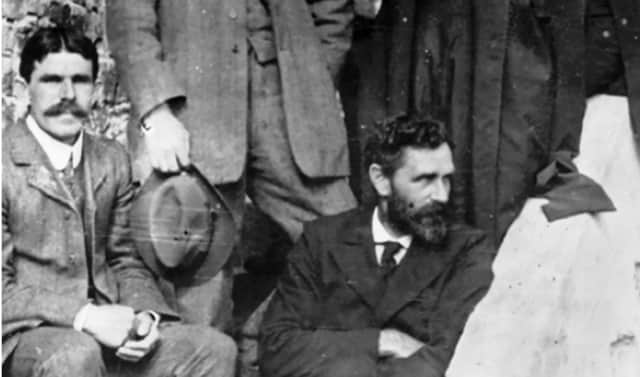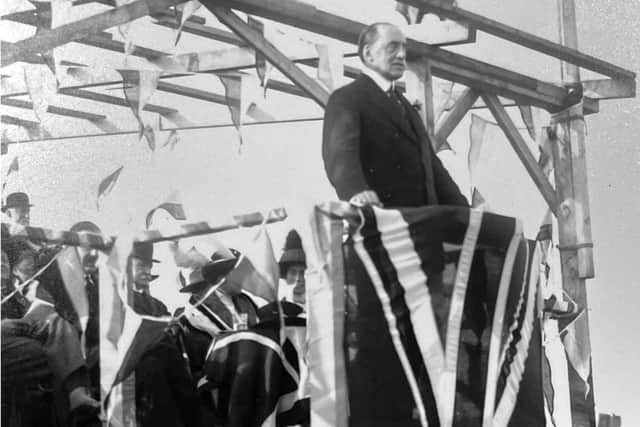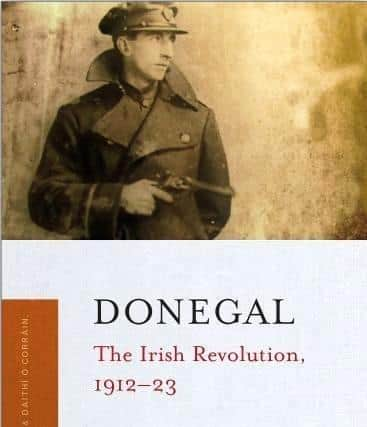Donegal was ‘far from disinterested bystander’ during revolution, reveals new book


While not in the vanguard of the Irish Revolution (1912-23), Donegal was far from a disinterested bystander, a new book reveals.
‘Donegal: The Irish Revolution, 1912-23’, by historian Pauric Travers, is a fascinating new assessment of the county in the revolutionary period which expands and refines our understanding of the nature of the era itself.
Advertisement
Hide AdAdvertisement
Hide AdThe author concludes that, while events elsewhere cast ‘long shadows’ on all aspects of life, the Donegal experience was active as well as passive.


The political events of the decade of revolution in Donegal examined in this new book from Four Courts Press are set firmly in the context of the underlying social and economic background.
The experiences of the different regions in a disparate county are highlighted, as well as the conflicting loyalties of unionists, home rulers and separatists. Religion and the shadow of partition loom large.
The emergence of rival paramilitary groups of Irish and Ulster Volunteers in response to the home rule bill threatened to spill over into communal conflict. This was averted, at least temporarily, by the outbreak of the First World War which had a profound impact.
Advertisement
Hide AdAdvertisement
Hide AdTravers writes that the radicalisation of opinion in the county after 1916 and the victory of Sinn Féin and the eclipse of both the Irish Parliamentary Party and the Ancient Order of Hibernians presaged a fundamental shift in allegiances and a successful military and administrative challenge to the legitimacy of British control locally.


In the book, it emerges that the IRA campaign in Donegal began slowly but grew in intensity during 1920–1. The imposition of partition had a deep and abiding impact in Donegal, not least on the unionist community in border areas, and contributed to the bitterness and intensity of the split in the nationalist movement over the Treaty and of the Civil War which followed.
Pauric Travers, a native of Donegal, says that writing a history of the county during the Irish Revolution was a “labour of love”.
In the opening pages of the book, he recalls that, writing to a friend in July 1916, shortly before his execution, Roger Casement recalled that his last view of Ireland before the outbreak of the First World War was of Tory Island, off the North West coast of Donegal.
Advertisement
Hide AdAdvertisement
Hide AdCasement had, of course, travelled through the remote Irish-speaking regions of the north west in the summer of 1914.
No stranger to the area, having visited during a previous period of ill-health, Casement had attended Colaiste Uladh in Cloghaneely to learn Irish and generously supported the college financially.
Exhausted from his efforts to reveal the atrocities inflicted on the indigenous population of the Putamayo region of the Amazon and disillusioned with the destructive impact of colonialism, Casement’s visit to Donegal in 1912 confirmed what Pauric Travers describes as a “reorientation” in his political outlook and helped “set him on a fateful path”.
It was then that he became convinced that only an independent country, free from colonial interference, could ensure the preservation of a distinct Irish cultural identity.
‘Donegal: The Irish Revolution, 1912-23’, by Pauric Travers, is published by Four Courts Press.